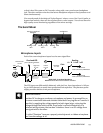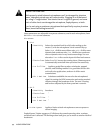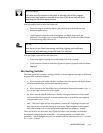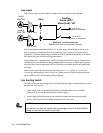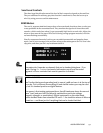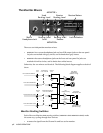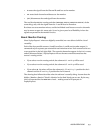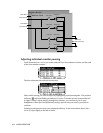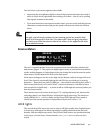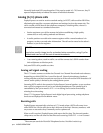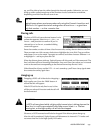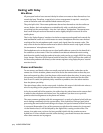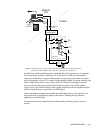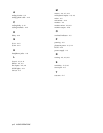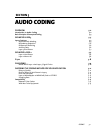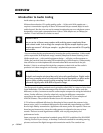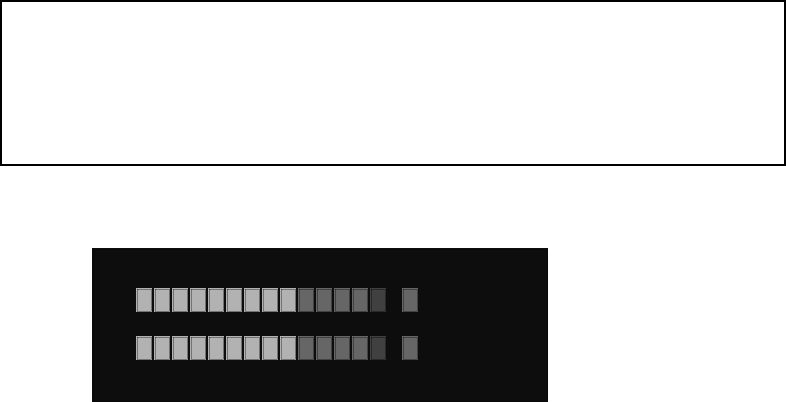
AUDIO OPERATIONS 4-11
You don’t have to pan mono signals to the middle:
¥ Separating the microphones slightly to match their physical positions may make it
easier to reach for the right knob when mixing a live show... even if you’re sending
their signals in mono to the studio.
¥ If you need more than two separate monitor mixes, you can use the individual stereo
channels as monaural mixes and pan the signals to determine which mix will hear
them.
h
HOT TIP!
The right- and left-most positions of each panning control are a switch that
directs all of the signal to that side. This means you’ll hear a slight jump when
you start to pan from the extreme side to the center, as the opposite side kicks
in at a reduced volume.
Receive Meters
-30 -20 -10 0dB
CH A
CH B
RECEIVE
LOCK
The two 14-segment RECEIVE meters have response times and calibration similar to the
SEND meters (page 4-7). They report the digital signal exactly as received from the distant
studio: nothing happens in ZephyrExpress that can change the levels between the codec,
these meters, and the RECEIVE OUT XLRs on the back panel.
If the meter readings are too low or too high, ask the distant studio to change their send
level. If the signal is occasionally lighting the red LEDs but you think you’re hearing
distortion — particularly on peaks or sibilance — they could be overdriving their codec’s
limits (many units force you to work “blind”, with no send meters). Ask them to lower
their console level significantly — as much as 6dB to 12dB might be necessary before you
hear any improvement.
These meters aren’t active when receiving a G.711 (analog telephone) call, because that
technology doesn’t use ZephyrExpress’ main digital signal processing. The meters are
totally disabled in Far Loopback mode, and the center LEDs light up in that mode to
remind you that normal operation is impossible until you turn Loopback Off.
LOCK lights
The two red LOCK LEDs next to the receive meters will light steadily when ZephyrExpress
is receiving a valid signal, the distant transmitter’s coding method matches the local
decoder, and the sample rates match. They’ll flash if both codecs are synchronized and
set for Layer 3, but the Layer 3 channel modes (mono, joint stereo, and so on) don’t
match.



